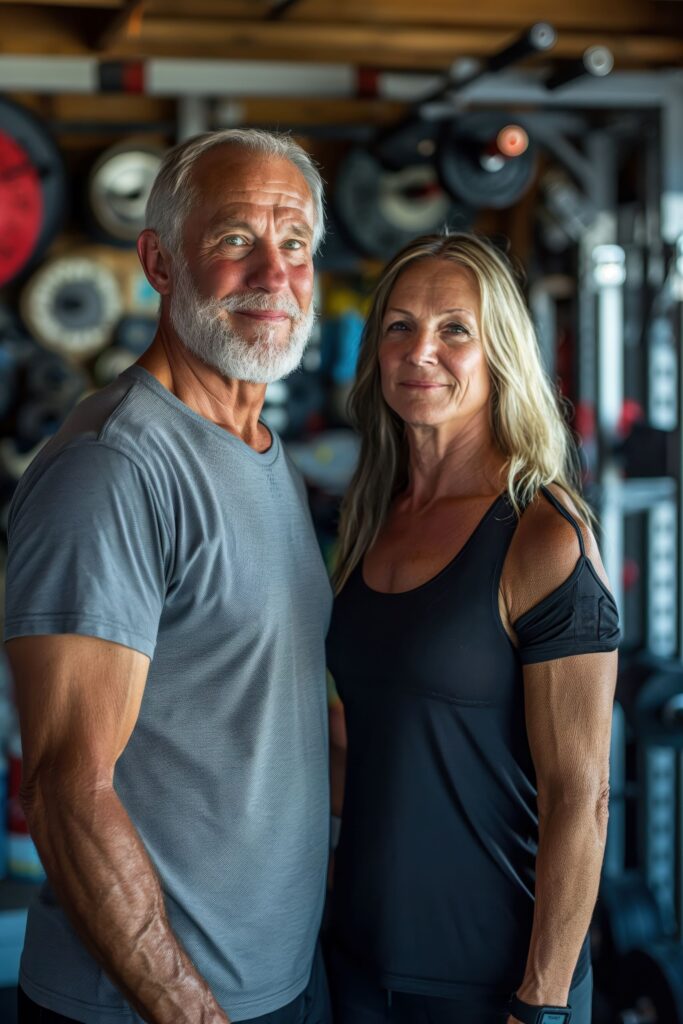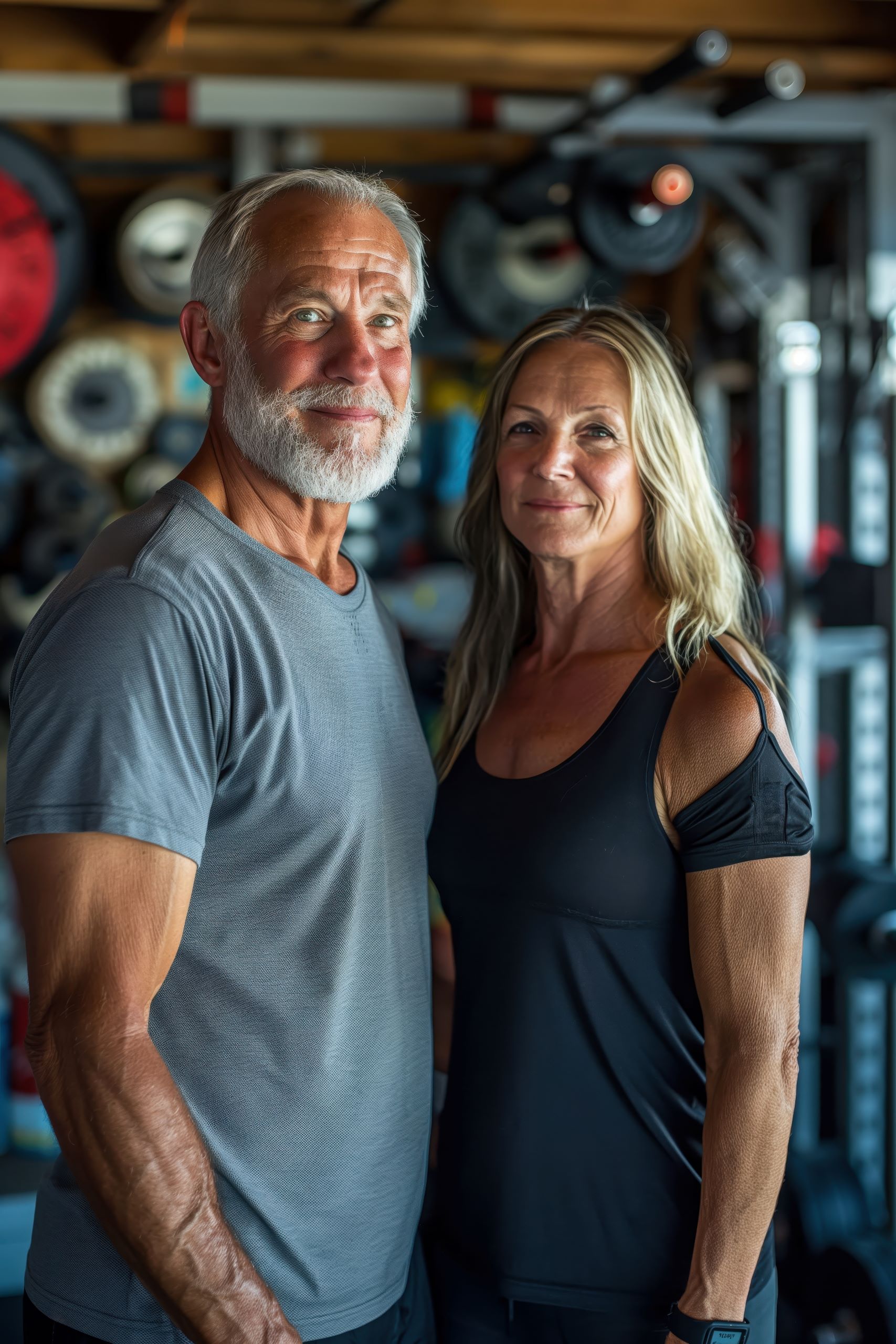At-Home Total Body Workout
Why do Some of Us Avoid Gyms?
You don’t need a gym or equipment to have an effective workout.
It can be challenging to get to a gym; for some of us, it may not even be an option. Sometimes, we are not in the mood to trek to a fitness club but still go, only to find it crowded with very little equipment available. Sometimes, beginners and on-and-off journeypersons need help using some equipment.
Gym equipment can sometimes appear intimidating. And it doesn’t help when you are sandwiched between some significant bulgy bodybuilder type on one side and another sleek, sexy, statuesque gym pro on the other. In the meantime, you may still be figuring out what to do with the machine you are on or what to do for the next exercise.
The next day, fresh from the bad experience, you begin a long, winding road of procrastination. Missed days turn into weeks, then months. In the meantime, the gym is happily withdrawing monthly fees from your bank account or credit card for unused service.
For others, the cost of a gym membership is unaffordable, and some people believe that the risk of injury is too high to take a chance, especially when they may not know what they are doing. I know many of you can relate to how overwhelming that can feel. Right? Well, it doesn’t have to be that way.
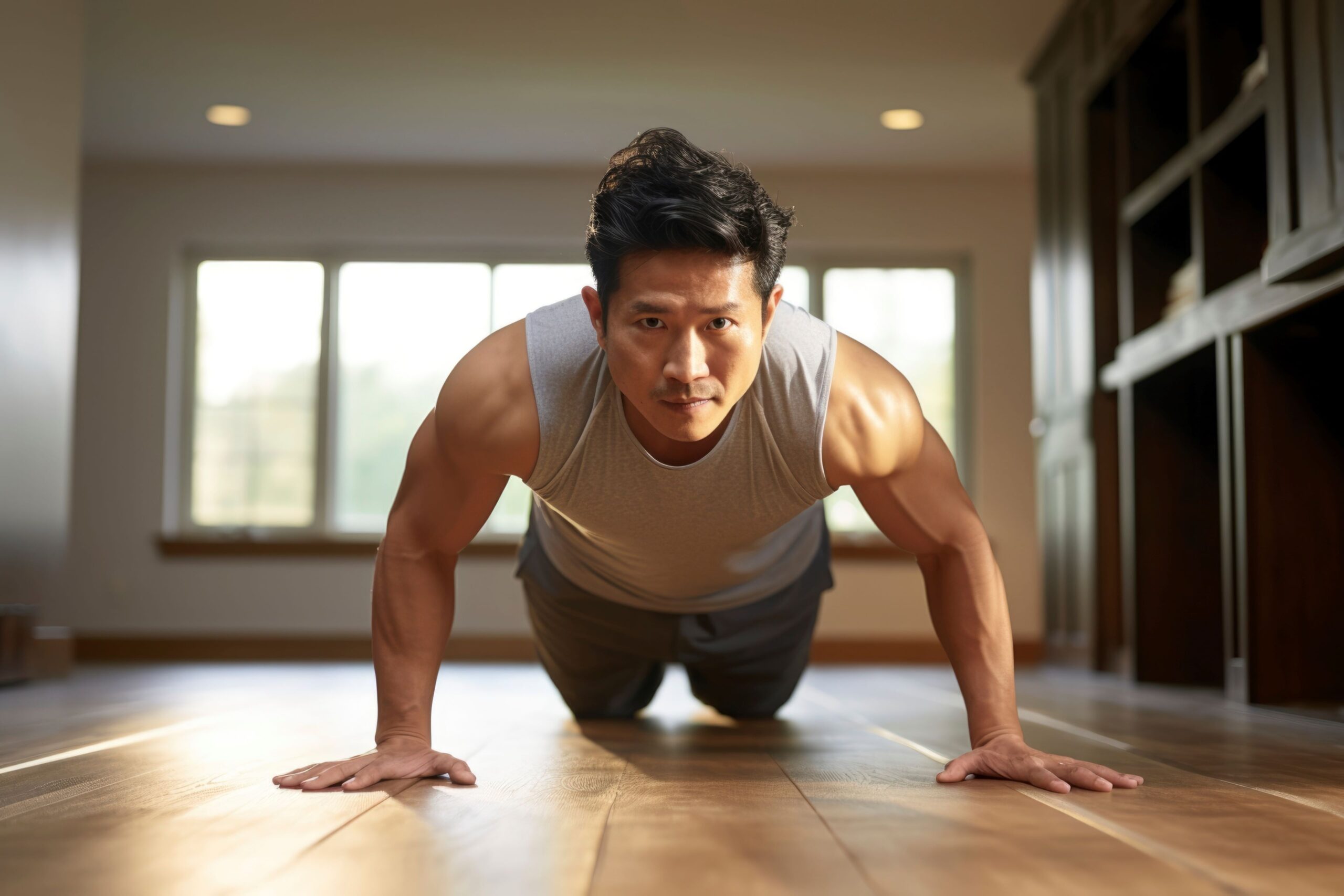
But Do We Need a Gym to Get Fit?
I spent much of my business career working in gyms and helping people like you achieve their fitness goals. So, I know how effective gym equipment can be for the success of every fitness enthusiast. But I also know how challenging the gym environment can be for others to get started.
The truth is, none of us need a gym to get into shape. Would gym equipment advance our efforts? Yes. But do we truly need equipment to make good gains, especially when starting or when we have yet to master specific exercises? Again, the answer is an unequivocal no.
There are many ways to achieve significant fitness success with little or no equipment. For example, do you remember doing push-ups, sit-ups, jumping jacks, and jumping rope in school, perhaps in grades 6-12? Well, guess what? Those exercises, along with others, can get us in great shape when applied the right way.
There Were No Gyms in Ancient Times
Ancient Warriors knew the effectiveness of bodyweight exercise training, which has existed for thousands of years from Africa to Europe and Asia. The term calisthenics is an Ancient Greek word meaning beautiful strength, and the concept of bodyweight training as we know it today goes as far back as Alexander the Great.
However, ancient civilizations appreciated the significance of bodyweight training even more. Warriors trained their bodies with wide-ranging degrees of strength tests, agility, power, endurance, hand and foot speed, flexibility, swimming, and mock hand-to-hand combat. It was all humans had for fitness programming.
Soldiers and gladiators understood that their bodies had to be in the best physical condition before entering battle. The only equipment they had to achieve fitness success was their bodies. Yet, most would crush today’s average gym member in strength and endurance tests. Today, we refer to these specific functional bodyweight movements as calisthenics and plyometrics.
In those days, gyms and equipment like bench presses or squat racks did not exist. There were also no handy-dandy weight scales, body fat calipers, or blood pressure screenings. And there was no fighting with sales offices over canceling or freezing memberships.
The Secret Sauce
When I began training clients in the early 2000s, one of the most common questions was how quickly I could get into shape. Over time, I realized their real interests were: “What do I need to get into shape? And what is a waste of my time? “
You need intensity, consistency, proper form (pay attention to each exercise repetition, do not rush the movements, and breathe), balanced nutrition, plenty of water, and a little space. Tracking your progress would help.
Everyone’s body responds differently to exercise, so your workout program depends on your fitness level. Some people can see significant results in a shorter period than others, while others may take a little longer. However, the common factors are consistency and applied energy.
Everyone will see the relative effect of a fitness program if they consistently apply adequate intensity. To optimize your results, I recommend training at least three days a week and working on each body part at least twice weekly.
As I repeatedly said, you do not need equipment to get started. If you follow the instructions above, you will see excellent results. There are 10s, if not 100s, of calisthenic exercises and combo variations. I included six exercises per upper body, lower body, and core for this article to keep things simple. These do not limit you; you may do more if you are familiar with calisthenics.
Other articles cover many more variations, plyometrics, and the differences between these bodyweight exercises. Working with just your body weight is also an ideal way to master the movements for those who eventually want to move on to using weights.
The Calisthenics Plan
Perform three cycles and up to 15 repetitions with each exercise.
*Please note that planks are performed by time and not repetitions. Therefore, hold the plank in place for up to 30 seconds.
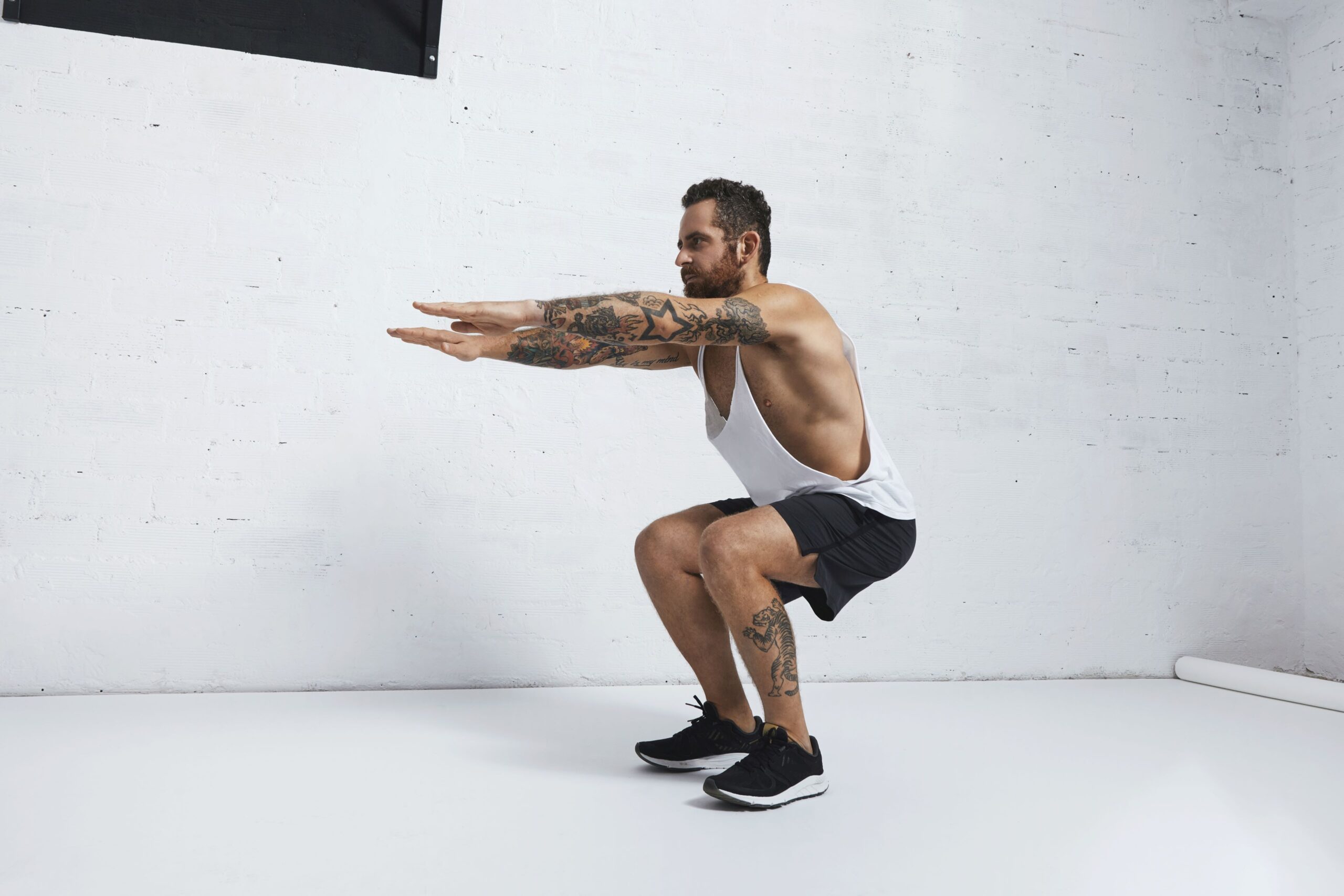
Bodyweight Squats
Work thighs, glutes, hips, and core.
· Place your feet slightly more than shoulder-width apart. Engage your abdominal muscles and keep them tight. Breathe naturally.
· Bend your knees and slowly squat down. Try to bring your glutes below the parallel line to your knees.
· As you rise, drive your weight through the center to the outside of your heels. Squeeze your glutes at the top.
· Be sure to keep your heads straight ahead and flatter shoulders.
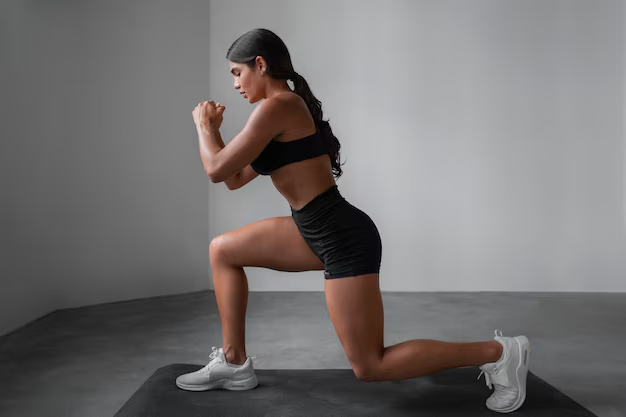
Bodyweight Lunges
Work thighs, glutes, hips, core, and stabilizer muscles around the lumbar region and legs.
· Place your hands on your hips and take a step forward. Engage your abdominal muscles and keep them tight. Breathe naturally.
· Bend your knees, and right before your back knee touches the floor, push through your front heel back up to the top. Then, squeeze your glutes at the top.
· Be sure to keep your heads straight ahead and flatter your shoulders.
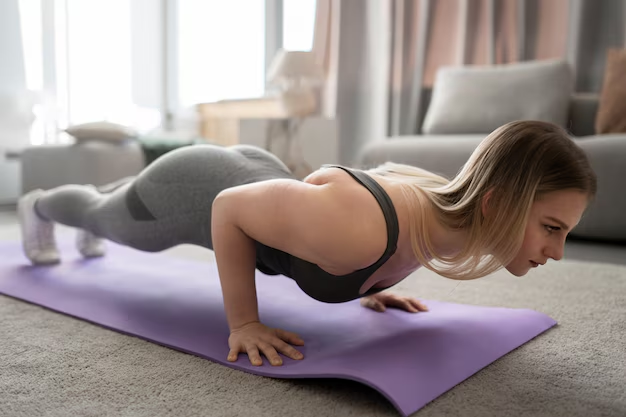
Standard Push-ups
Work chest, triceps, shoulders, abs, hips, and legs.
· Lay down on all fours. Rise onto your hands and toes.
· Keeping the back straight, roll your pelvis toward the hamstrings, and squeeze your glutes tight.
· Place both hands parallel to your chest, and ensure your wrists are vertically under your shoulders.
· Align your elbows close to your body and point backward. Push up and down without locking your elbows or touching the floor.
· Keep your head straight and look forward. Focus on your shoulder blade movement. Focus on pushing them down toward your lower back during the exercise, not hunching your shoulders.
· Bring your shoulder blades together when moving down and apart when moving up.
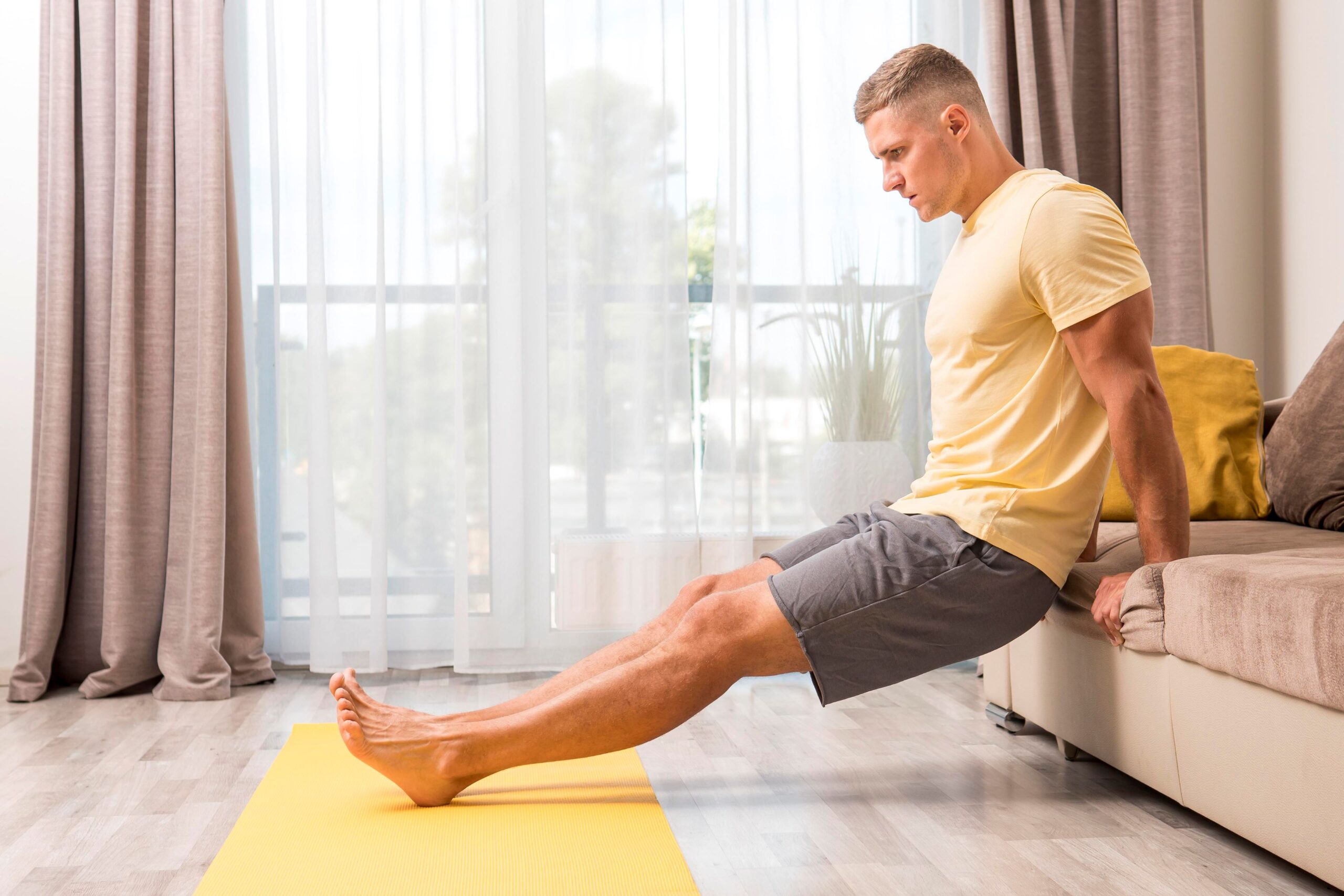
Dips
Work the triceps, chest, and shoulders.
· Use a chair, bench, ledge, or floor.
· Flatten your shoulders by rolling them down and keeping your chest open.
· Place both hands directly under your shoulders in a straight vertical line.
· Extend the feet in front of you and bend your knees.
· While Engaging ab muscles, slowly drop your hips toward the floor in a straight line.
· Bring your elbows slightly below a 90-degree angle.
· Do not hunch your shoulders in the downward position. Depress your shoulders and keep them flat.
· Push your body up through the palms of your hands.
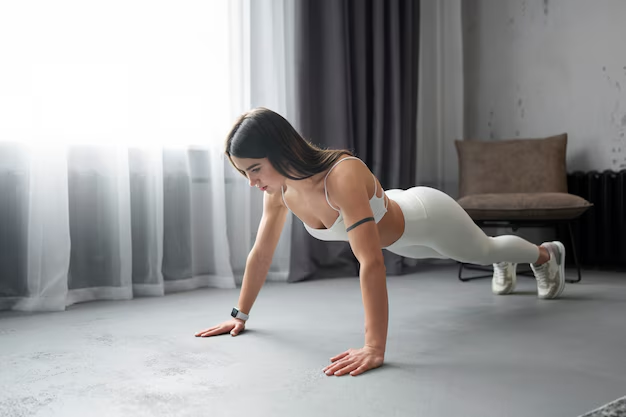
Planks
Work the entire body with an emphasis on firing up core muscles.
· Lay down, place both elbows (or use hands) on the floor parallel, and get on your toes.
· Make sure that you have your shoulders directly over your elbows.
· Your body should be straight from your elbows to your toes.
· Draw in your belly button to engage your deep core muscles and breathe naturally.
· Hold the position for 30 seconds.

Bent Over Rows with Bands
Work back muscles, biceps, and forearms.
· Grab a resistance band and anchor it underneath your feet.
· Grab the band. A good practice is to have the right hand grab the band’s left side, and your left hand grab the right side.
· Bend forward and keep a neutral hip by slightly rolling your pelvis backward toward your hamstrings.
· Pull the band toward your chest, keep your elbows close to your body, and grow upward.
· Engage your abs and keep them nice and tight.
· Do not drop your head down. Stay in line with your shoulders, with your face looking three feet ahead of your feet.
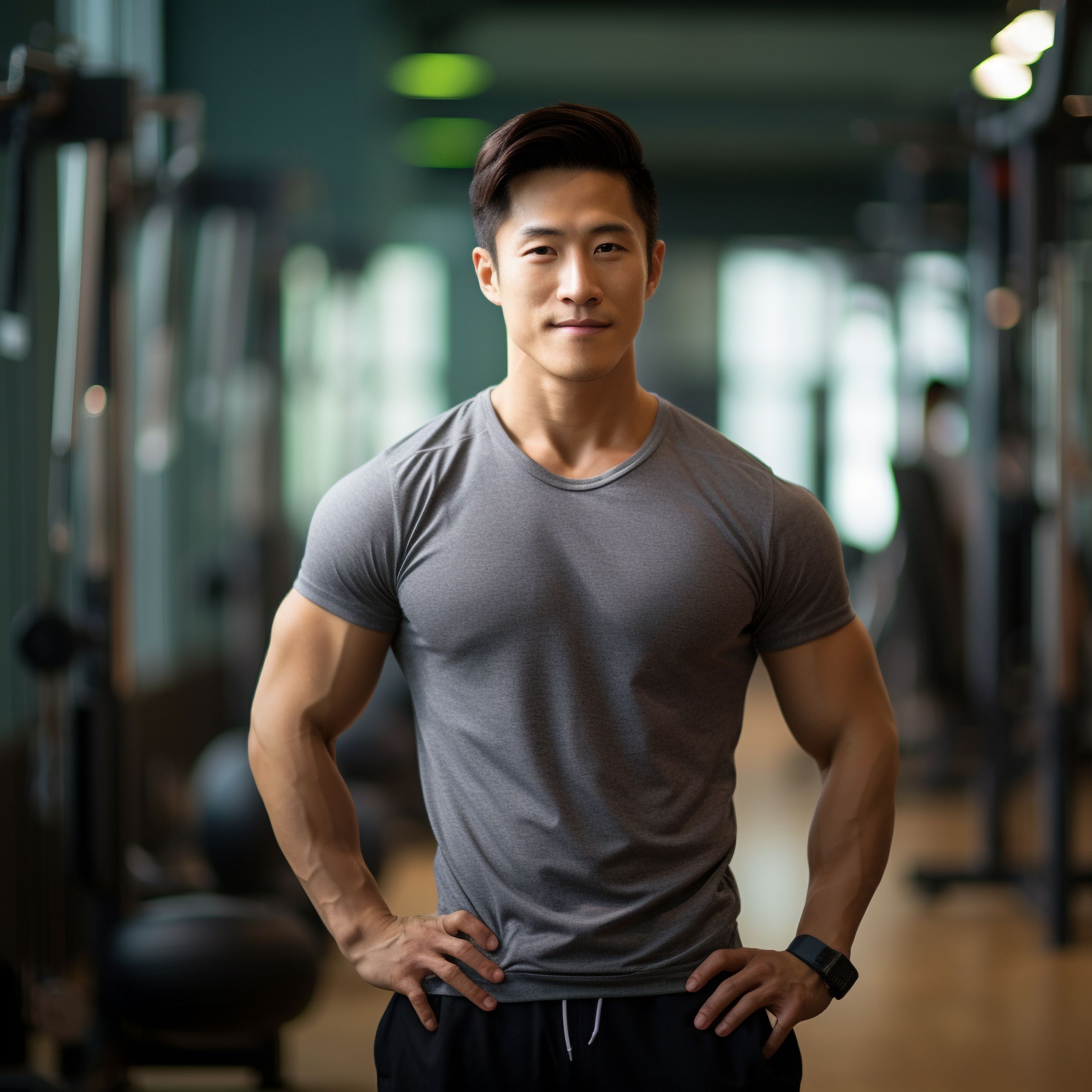
Conclusion
Using your body weight can provide solid workout routines. You can advance your regimen by increasing intensity and incorporating different exercises into your program. We will cover some of those additional exercises in a future article. There are over 50 calisthenic exercises and even hundreds when you combine specific activities to create new variants.
I want everyone to understand that developing a healthy lifestyle takes time, patience, and consistency. Even after mastering it, anyone can become injured or sick, regress to eating the wrong foods, not working out, and lying on the couch after work every day.
I am an example of those bad habits. And I am now again proving how fitness goals can be achieved even after major setbacks. As long as you stick with a program, put in a solid 75%- 85% maximum effort, and use proper form on every repetition, cycle, and set, you will make significant progress.
However, all the exercises this blog covers are only meaningful if you practice them consistently and follow a healthy meal plan. Even though you would have developed more robust, flexible, toned muscles, you won’t be able to see them with layers of fat shading them from view. Stay healthy. Remember that health and wellness are lifestyles. Exercises you need to get lean!
Before starting any new health and fitness program or taking supplements, it’s crucial to consult with your healthcare professional. They can provide personalized advice based on your medical history and current health status, ensuring your new regimen is safe and effective. This step helps prevent potential health risks and ensures that any changes you make are beneficial and sustainable in the long run. Your healthcare professional is your best resource for making informed decisions about your health and wellness journey.

